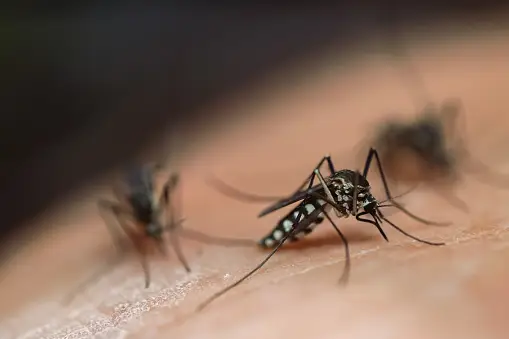Scientific Facts About Mosquitoes That You Should Know
- Esther M.
- Aug-28-2023
- Mosquitoes
Mosquitoes are flying insects that are found in many parts of the world. Not all mosquitoes bite, but when they do, they can transmit diseases. Adult mosquitoes can live up to four weeks depending on humidity, the species, and many other factors.
Here are some facts about mosquitoes that you should know:
Species of mosquitoes
Mosquitoes come in different species all over the world. From biting mosquitoes to those that do not bite, some spread diseases while others are just vectors transmitting germs.

There are more than 3,000 species of mosquitoes, but the members of three bear primary responsibility for the spread of human diseases. Anopheles mosquitoes are the only species known to carry malaria. They also transmit filariasis (also called elephantiasis) and encephalitis. Culex mosquitoes carry encephalitis, filariasis, and the West Nile virus. And Aedes mosquitoes, of which the voracious Asian tiger is a member, carry yellow fever, dengue, and encephalitis.
Mosquitoes transmit disease in a variety of ways. In the case of malaria, parasites attach themselves to the gut of a female mosquito and enter a host as she feeds. In other cases, such as yellow fever and dengue, a virus enters the mosquito as it feeds on an infected human and is transmitted via the mosquito’s saliva to a subsequent victim. Read more from National Geographic…
The most common species is the one that spreads malaria, Anopheles mosquitoes, a worldwide fatal disease.
Mosquitoes are attracted to carboxylic acids
Carboxylic acids are compounds that are secreted by the human skin that attract mosquitoes to people. These acids are also found in ‘’stinky’’ cheeses like limburger.

Carboxylic acids are commonplace organic compounds. Humans produce them in our sebum, which is the oily layer that coats our skin; there, the acids help to keep our skin moisturized and protected, Vosshall says. Humans release carboxylic acids at much higher levels than most animals, De Obaldia adds, though the amount varies from person to person. The new study had too few participants to say what personal characteristics make someone more likely to produce high levels of carboxylic acids—and there’s no easy way to test your own skin’s carboxylic acid levels outside of the laboratory, Vosshall says. (She muses, however, that sending people skin swabs in the mail could make for an interesting citizen science project in the future.) Read more from Scientific American…
Different people produce different levels of carboxylic acids, which is why some are more prone to mosquito bites than others.
Mosquitoes are deterred by eucalyptol
Eucalyptol is a chemical compound that is found in plants and acts as a deterrent for mosquitoes. As a result, mosquitoes will not be attracted to someone who is on a diet that has a high concentration of this compound.

Using this system, we were able to discern through a small screen of six individuals that the most attractive human had a scent signature that was dominated by a class of molecules called airborne carboxylic acids. These are compounds produced by microbial metabolism on human skin. Interestingly, two of those carboxylic acids are also found in the headspace of cheeses, like Limburger cheese.
On the flipside, we found that one participant had a scent signature that was dramatically different from the others. It was depleted of airborne carboxylic acids and enriched for a compound known as eucalyptol, which was likely derived from the individual’s plant-based diet. Read more from Johns Hopkins…
This type of information is useful for creating repellents that might ward off mosquitoes.
Mosquitoes are very dangerous insects, so one should be vigilant about them to prevent the spread of disease. At Backyard Bug Patrol, we are fully equipped and experienced to help you prevent the spread of mosquitoes around your home. Call us today for assistance.
Related posts:
- Did You Know These Three Things About Mosquitoes?
- Three Interesting Facts About Mosquito Behavior And Temperatures
- Little-Known Facts About The Mosquito Anatomy And Its Significance
- Mosquito Control Methods For a Peaceful Night at Home
- Mosquitoes and Skeeter Syndrome: The Facts, Risks and Possible Solutions
